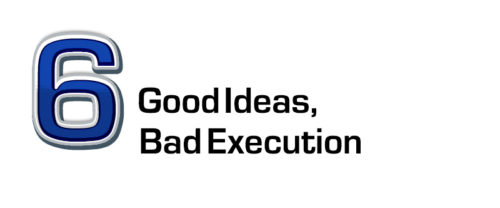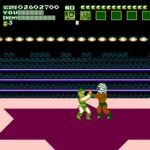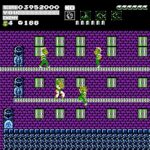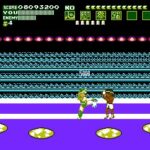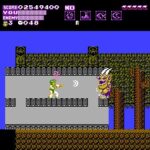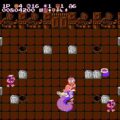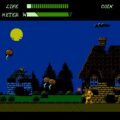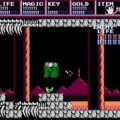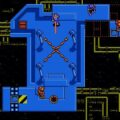Developer: Culture Brain Publisher: Culture Brain Release: 08/89 Genre: Action
Culture Brain is not the first name on my list of best NES publishers. But I will give them credit for coming up with some weirdly ambitious titles. The Baseball Simulator 1.000 series next to Baseball Stars is my favorite iteration of the sport. Magic of Scheherezade combines action RPG trimmings with turn based combat and is one of my top ten favorite NES title overall. But for each success there was an equal number of less than stellar titles that try a little too hard to be different. Flying Dragon has a number of good ideas but falls short in its execution.
All of the secret scrolls of Hiryu-no-Ken were stolen from the Grandmaster Juan except one, which he entrusts to his student Ryohi. After training for six years with Gengai, a bishop of Shorinji he receives a challenge from the Tusk Soldiers to compete in the World Tournament of Combat Sports. It was the Tusk Soldiers who killed Juan and stole the secret scrolls. With a goal in mind and the opportunity to kill two birds with one stone Ryohi sets out for revenge.
Flying Dragon’s story is not anything special but it figures pretty heavily into the game’s plot through frequent cutscenes. I struggle to use the term as they are nothing more than talking heads. While the story does not aspire to be anything great the gameplay does. Mechanically Flying Dragon blends platforming and one on one fighting to create something unique. However noble the goal there are issues that prevent it from being the good game it should be.
Flying Dragon has two distinct parts. During the journey levels you control Ryohi in side scrolling fashion as he beats up a never ending barrage of thugs on the way to the game’s exit. It is a bit over bearing dealing with waves of enemies that spawn ceaselessly but they serve a purpose. Each stage has five bosses who must all be defeated in order to obtain the key to the exit. These bosses appear after a set number of enemies are killed. The levels are short and loop infinitely until you receive the key. However the time limit means you cannot dawdle. Honestly this aspect of the game is boring. You face the same enemies and bosses and only the setting changes. But at least it is competent outside of the wonky control scheme.
The controls for these segments are manageable but not the most intuitive. You have a punch and kick and jump by pressing Up. I have a special hatred for games that do this also reserved for any company who tried to be unique and make A shoot and B jump. Luckily what little platforming there is is relegated to taking the high ground for items or avoiding attacks. There’s an odd delay when attacking which is annoying but this part of the game does not need lightning reflexes.
The true meat of the game however lies in its Tournaments. It is these parts of the game where it essentially becomes a proto fighting game. The extensive training mode early on teaches you all the mechanics you will need and is in depth. You will learn how and where to defend, when to attack a vulnerable spot and earn new attacks as the game progresses. There is a large selection of moves to learn including body throws, hurricane kicks, spinning ground kicks, and the ultimate attack, the Hiryu-no-Ken. Combat has a flow with red and blue dots showing where you and your opponent are vulnerable, necessitating some form of action. It is surprisingly in depth as you can perform counters and evasive maneuvers as well.
The tournaments make up the majority of the game and are ambitious but also where the game stumbles. Simply put the responsiveness of the controls is terrible. As the game cycles through weak points and you try to respond the input delay means your attacks either miss or never perform. The speed they expect you to react is insane; it starts simple in the first tournament but ramps up quickly. The weak points cycle too quickly and the input delay raises the difficulty severely. Meanwhile the ruthless AI pounds your face in with no trouble. As it is a tournament you go through multiple consecutive battles and winning even one is a god damn achievement. It is a damn shame as I like the idea of the tournaments but the execution ruins it.
If you somehow manage to complete Flying Dragon it takes a page right out of Ghosts ‘n Goblins. You need to complete the game a second time to see the true ending. In addition to regaining all six scrolls you must also find four crystal balls that can reside in any object. Playing through the game once is a task in itself. I doubt anyone who had the willpower to suffer through the tournament battles the first time will be able to muster up the enthusiasm to want to go through it all a second time.
In Closing
With most of their releases Culture Brain always seemed to strive to deliver something different. While they rarely succeeded I can at least give them an A for effort. That does not mean I would recommend a flawed game, of which Flying Dragon applies. This is the definition of good ideas, bad execution.
